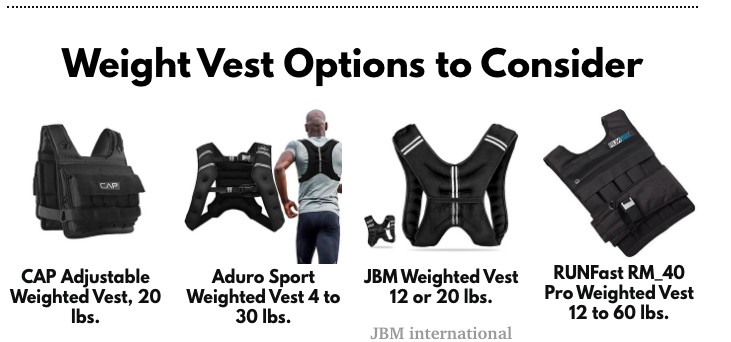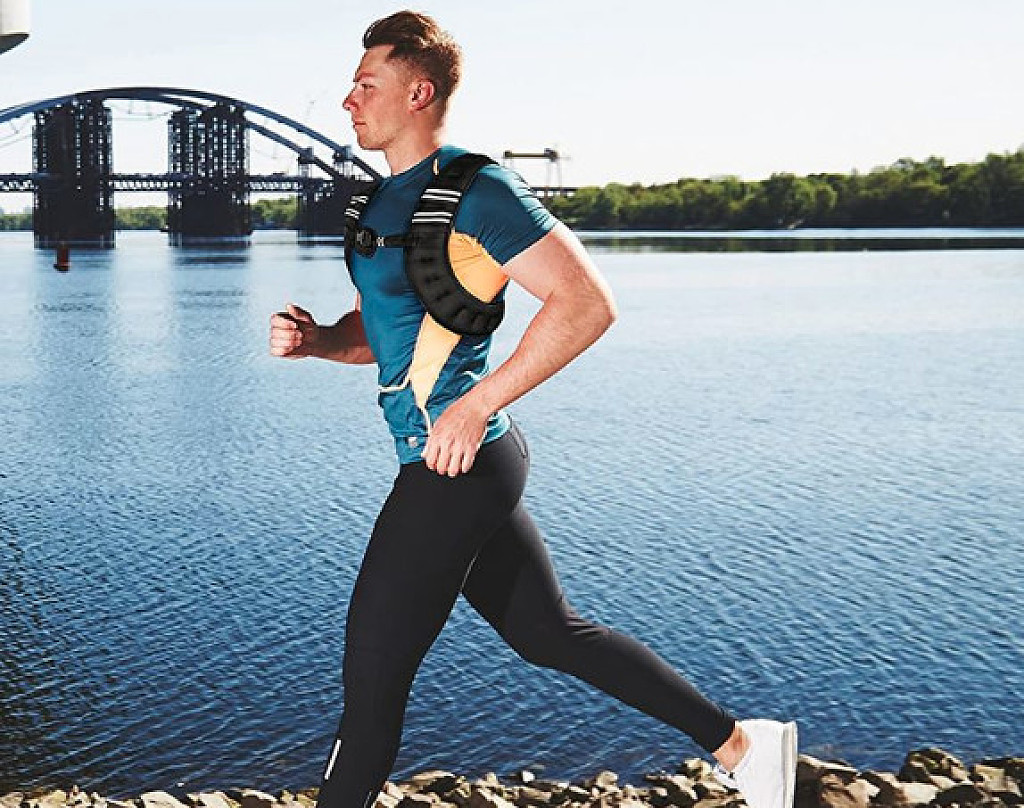Running News Daily
Running News Daily is edited by Bob Anderson. Send your news items to bob@mybestruns.com Advertising opportunities available. Train the Kenyan Way at KATA Kenya and Portugal owned and operated by Bob Anderson. Be sure to catch our movie A Long Run the movie KATA Running Camps and KATA Potato Farms - 31 now open in Kenya! https://kata.ke/
Index to Daily Posts · Sign Up For Updates · Run The World Feed
Can Running With a Weighted Vest Improve Your Performance?
Most of us want to boost our speed, but can adding heft to our miles help slash splits?
Earlier this year, the coronavirus outbreak forced gyms and fitness studios to close, which forced us all to get creative with our running and training routines. One popular running add on: a weighted vest.

It’s hard to pinpoint exactly where the idea of working out or running with a weighted vest originated. The military and firefighters have long used weight vests in training to mimic the load of equipment they carry during duty. But the trend became more mainstream when CrossFit incorporated weighted vests into certain memorial Workout Of the Days (WODs) to make them more challenging.
But can adding heft actually improve your running performance? We asked running and fitness experts to break down the benefits, risks, and everything in-between.
The Benefits of Running With a Weighted Vest
Wearing a weighted vest while walking or running essentially increases the load on both your muscles and connective tissues. “That weight increase brings a challenge and a new stressor on the body, and change only occurs when the body is stressed,” says Mat Forzaglia, certified personal trainer and founder of Forzag Fitness in New York City. “By adding stress, you can improve your overall fitness.”
Sure, you can add stress by doing speed intervals or lifting weights, but “the idea is that by increasing weight while walking or running, the athlete is making weighted training as specific to their sport as possible,” explains Jason Fitzgerald, USATF certified coach and creator of Strength Running in Denver, CO.
When it comes to boosting endurance and increasing speed, it’s possible to move the needle when done safely and progressively. “Running with a weight vest has the potential to make you faster by reducing your injury risk so you can train long-term, and by increasing your aerobic fitness,” explains Fitzgerald.
Even if you’re not initially running at the same speed or intensity that you usually can (and you probably won’t be able to!), you can still reap the benefits. “Weighted walks or low-intensity running are more challenging than the same activity without a vest, so respiration will be higher at lower intensities, and that can help boost endurance while reducing an athlete’s risk of injury,” says Fitzgerald. “Plus, added strength gains will help mitigate injury risk—and staying healthy is one of the best performance enhancers possible.”
Can Running With a Weighted Vest Build Muscle?
While running with more weight on your body will help you build some muscle, it will be marginal compared to other forms of resistance training. “It won’t be like if you were to squat or deadlift,” says Forzaglia. “It can help you learn to endure heavier weight for longer periods of time.”
What About Weight Loss?
Just like with all other forms of exercise such as walking, running, cycling, and weight lifting, running with a vest is one method that burns calories. But your diet and lifestyle play important factors as long-term weight loss is more complicated than simply: Calories in need to be less than calories out.
“Adding weight and stress to your runs will help burn more calories, but how quickly you lose weight will vary depending on your body composition, nutrition, and other factors,” says Kenny Santucci, NASM, personal trainer and creator of STRONG New York in New York, NY.
“The extremes of exercise will always be more productive, such as high-intensity, long-duration, and very frequent exercise,” adds Fitzgerald. Follow these science-backed tips if you’re interested in running for weight loss.
How To Properly Run With a Weight Vest
If you’re going to try it, it’s important that you’re ready and capable to do so in order to prevent injury. “One of the most important things to consider when it comes to training is being prepared to train,” explains Santucci. If you’ve never run before, or you don’t typically use weights to train, Santucci doesn’t recommend running with a weight vest as the joints won’t be prepared to handle the load.
“Running with extra weight does increase the stress of running, so it can be an injury risk,” explains Fitzgerald. “I’d advise that you begin by hiking [or walking] with a weighted vest, and once that feels good, reserve only very slow running for the vest.” In other words, strap on a weight vest for your shorter, easier running days, or try hiking or walking with a vest on cross-training days. You don’t want to slot this in on recovery days as the extra load will not allow your body to fully recover.
Fitzgerald also points out that it’s not smart to wear a weighted vest during any kind of speed workout. “The goal is speed, and a vest will slow you down,” he says.
Forzaglia suggests using a weight vest during the off-season. “It’s a tool you can utilize in the strength training block, early in the off-season,” he says. “It’s not something to try as you’re leading up to a race.”
How to Choose The Correct Weight
Training with a weight vest adds a whole new load onto the body. In order to not end up too sore—or worse, injured—you should start light, with a weight possibly even less than you think you can handle so your body can get used to this new load. “Err on the conservative side and wear enough weight that you just notice it at first,” says Fitzgerald. “You can always add more later.”
Santucci recommends starting with 10-pounds and then gradually increasing from there. “You’ll work up to the standard weight vest amount for women, which is 14 pounds, or men, which is 20 pounds,” he says. “Your goals will determine how much weight you add.”
Forzaglia recommends vests that have individual single pound or two-pound weights that you can progressively add in or on to the vest as you get stronger and feel more comfortable with the vest.
How Often Should You Do It?
This really depends on your goals. In the beginning, all experts agree to start slow as your body gets used to the additional weight. Doing too much too often may end up sidelining you. Once you’re comfortable with it, you can work it into your routine.
“The frequency with which you wear a weight vest does depend on the race you’re training for but in general, a few times per week will work well for most runners,” says Fitzgerald.
by Runner’s World
Login to leave a comment




